2019. Part 1. New Site and Eggs to Fledge
For many reasons, I am weeks, even a whole nesting season, behind in my Peregrine reports. As a full-time wanderer (camper) I only spend a short period of time in Kentucky and, with lots to do, editing photos and writing descriptions just didn't happen in a timely manner this year. I am writing several blogs to cover different ages and stages but will give the spoiler that it was a perfect nesting season for Dee and Blue Jacket (BJ). Three eyasses hatched and fledged but included some heart-stopping moments for me during fledging. I believe all three are female with the youngest slightly smaller than the others but all larger than BJ. This makes 5 successful fledges for Dee. To track this we name them with the first letter of the female's name plus the hatch number. These three are Dee's 6th, 7th, and 8th hatched so they are named D6, D7, D8.
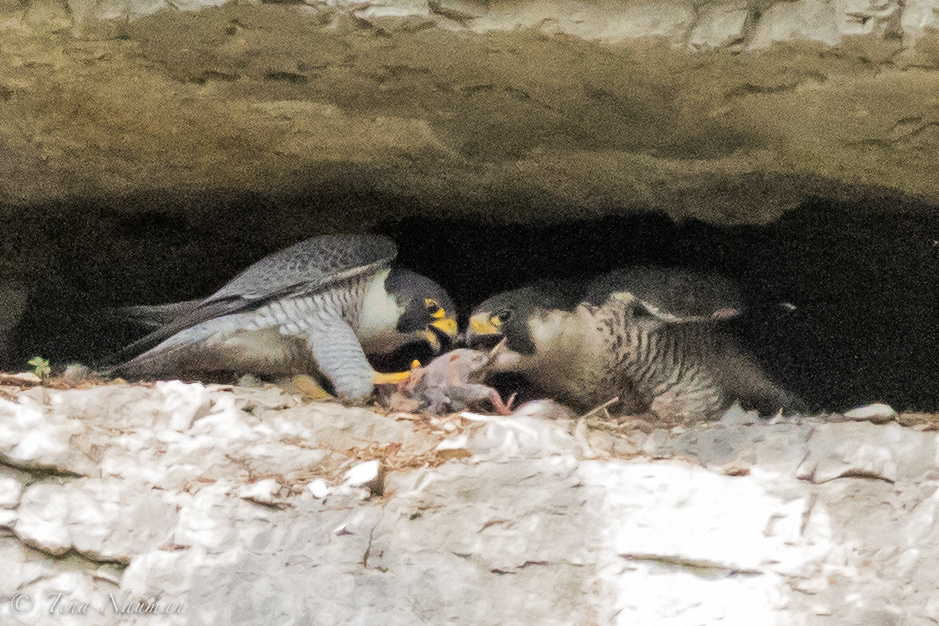

Dee and BJ began bonding and found a new nest site immediately after last year's eyasses were predated. The new site is a perfect location for every age and stage. With a full year for Dee and BJ to bond they seem extremely compatible. Communication and teamwork between them is excellent and they worked well together to successfully raise their young. BJ is a great provider and Dee continues to show excellent maternal skills. Everything went well from site selection to eggs to hatch to fledge to post fledge training. If only every year could be so easy and successful.
Note: All ages are estimates to the best of our ability as we do not have an exact hatch date so estimates are based on physical development.
The scrape for the eggs is deep and well protected and all that can be seen are the parents during a nest exchange. But, we recognized there was a hatch when food was brought in and parents were sitting high on the nest.
At 6 days after estimated hatch we had our first view and there appeared to be only one eyas.
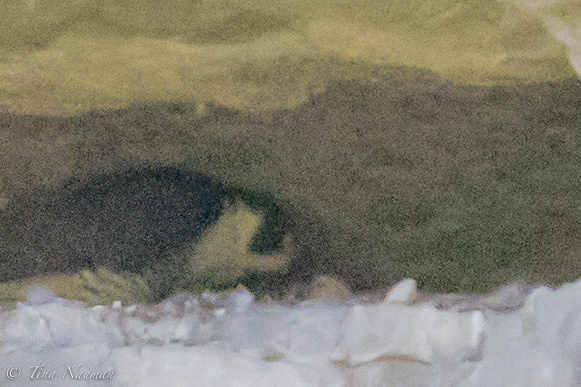

By Day 18, when an eyas is large enough to leave the scrape, we realized that only one of three had been showing itself at any one time. There are THREE!
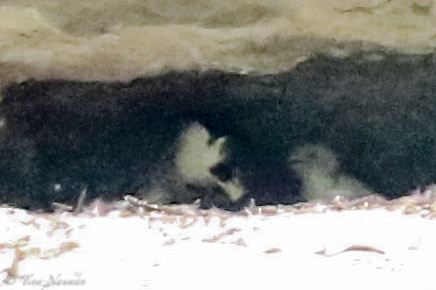

First view of all three.
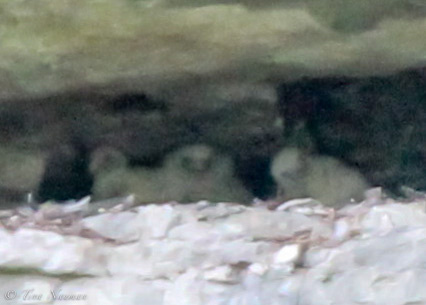

The eyasses have plenty of room to grow and develop, there is space for a safe night-time roost in an area that is tucked far back in the cliff thus making it easier for the parents to protect the eyasses from predators.
Day 20. They are much more mobile as they walk on their hocks. Dee or BJ perch near by but are rarely in the nest area except for feeding. They are about 1/2 the size of the parents. There is one that we see less than the other two and we guess it is the youngest D8.
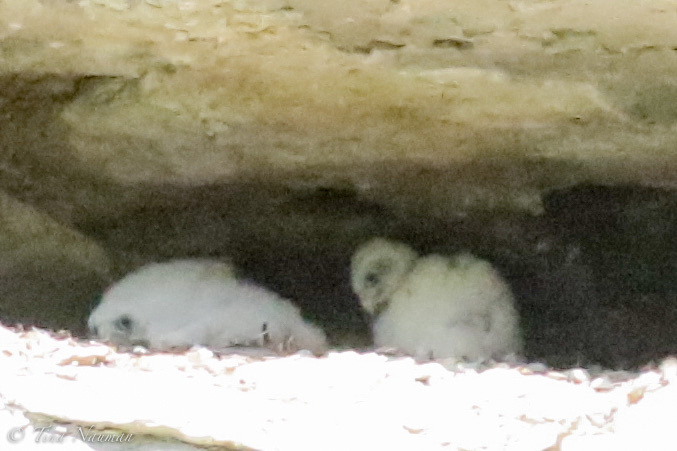

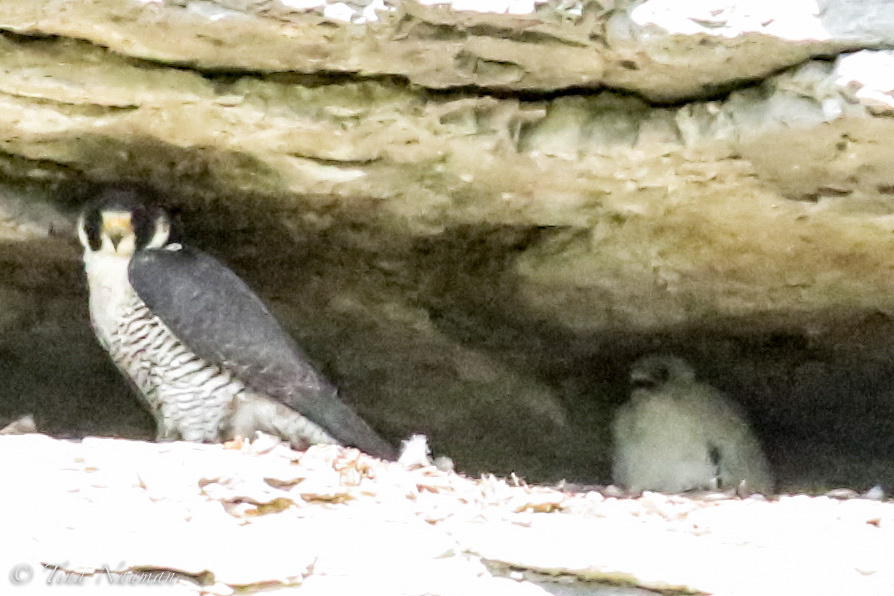

Age 28 days and they are walking upright most of the time. They are still mostly fluff but wings feathers and facial details are developing quickly.
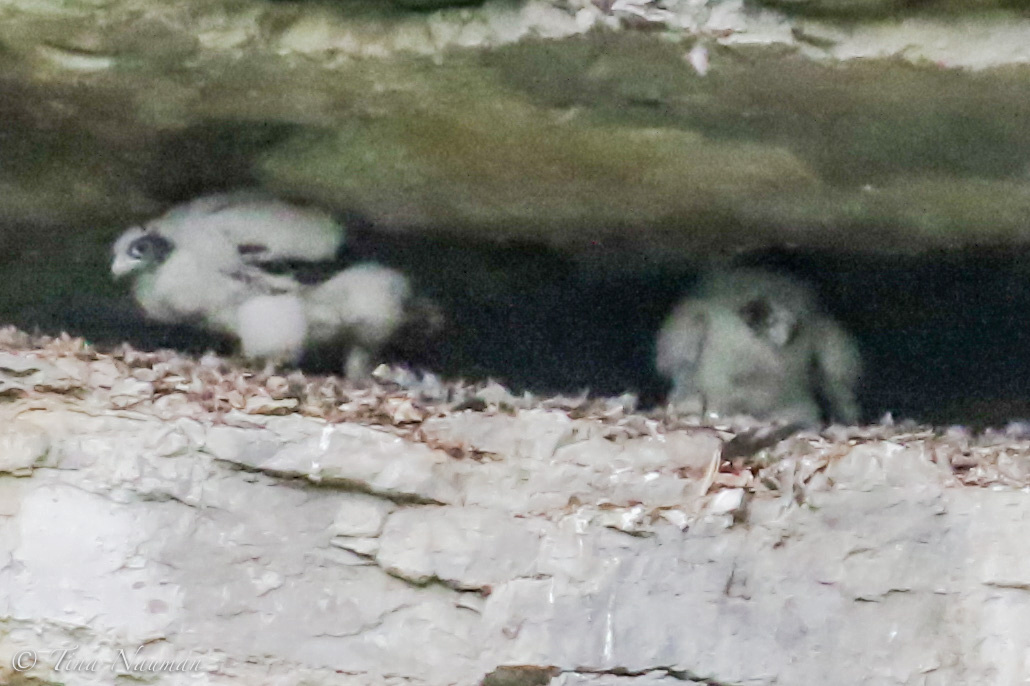

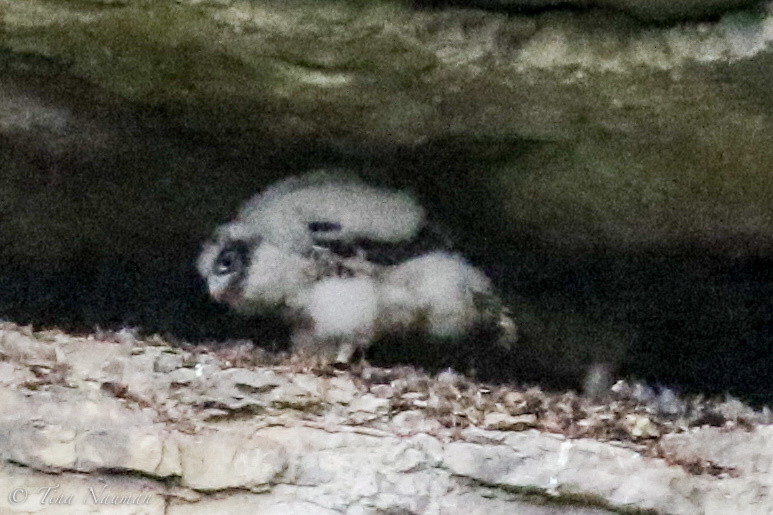

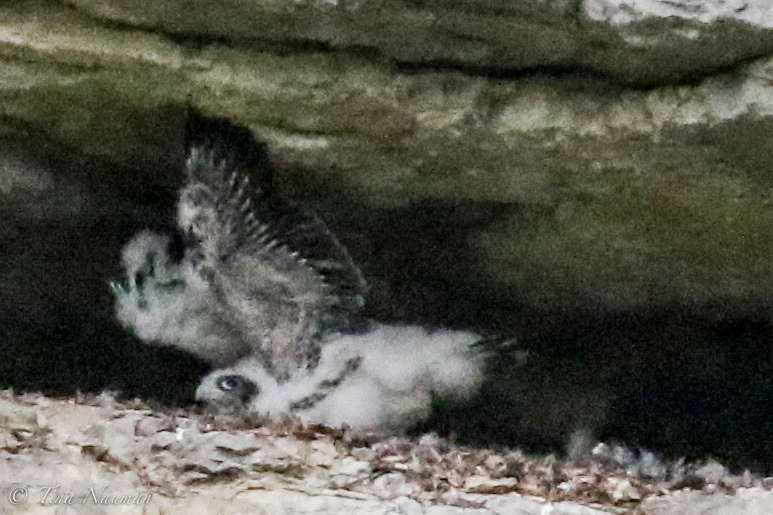

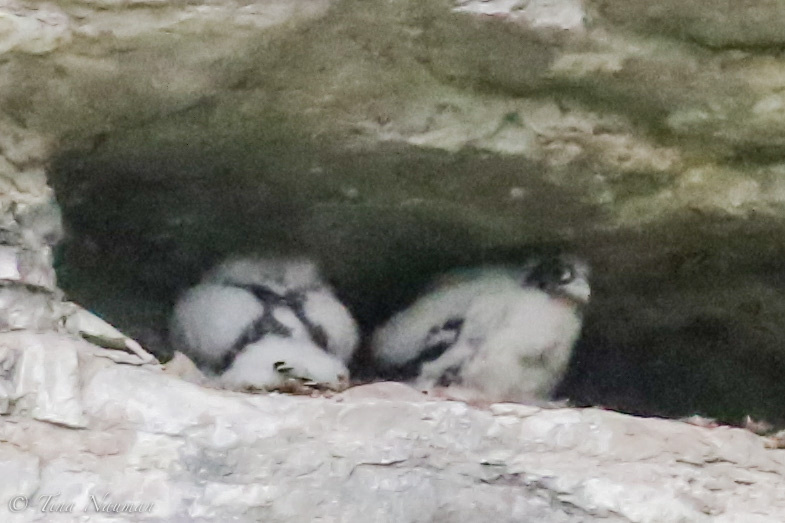

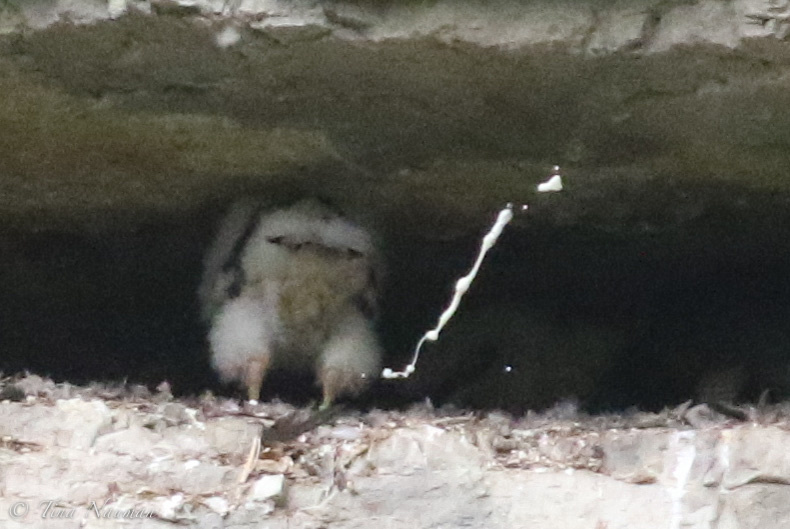

Age 35 days. Change is very rapid from day to day as down is falling out and feathers are those they will have until their first molt a year from now. A great deal of their awake time is spent preening out the down.
The difference between oldest D6 and the youngest D8 is easily seen in this photo.l
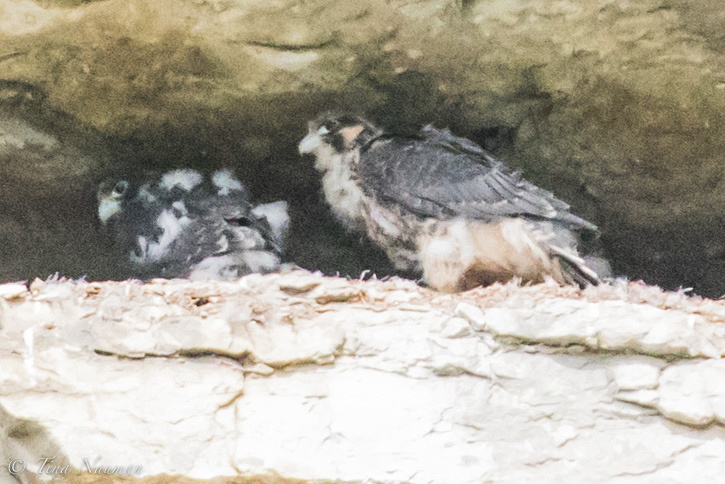

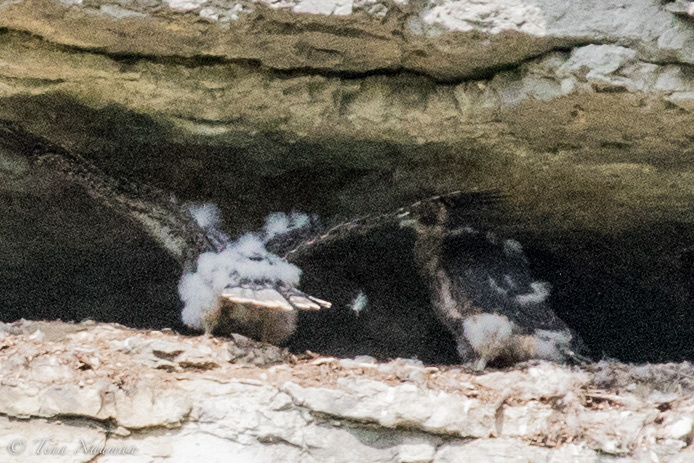

Down is flying as they work to strengthen their wings and endurance.
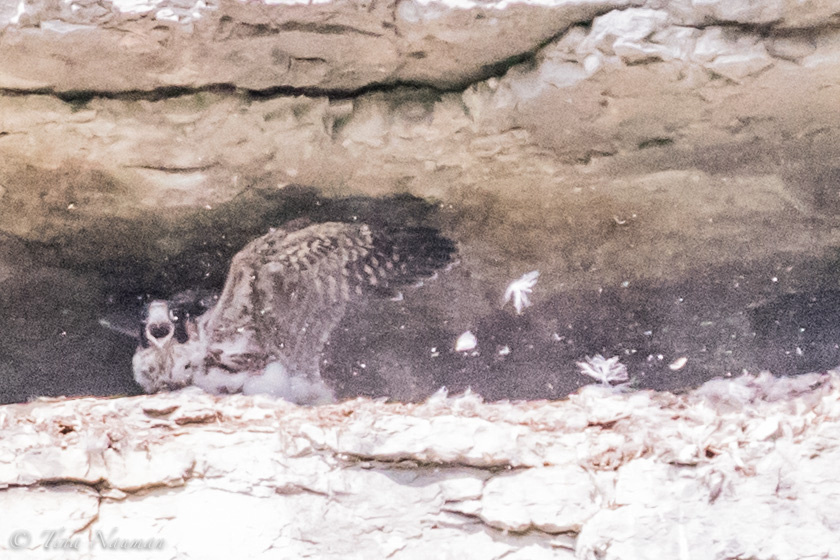

Age 38 days. In 3 days a tremendous change has happened! D6 fledged the next day at day 39. They are fully grown and about the size of Dee. BJ is a big male but is smaller than each eyas. Little puffs of down remain and with every movement more float into the air. I saw all 3 fledge and those fledges will be in separate blogs.
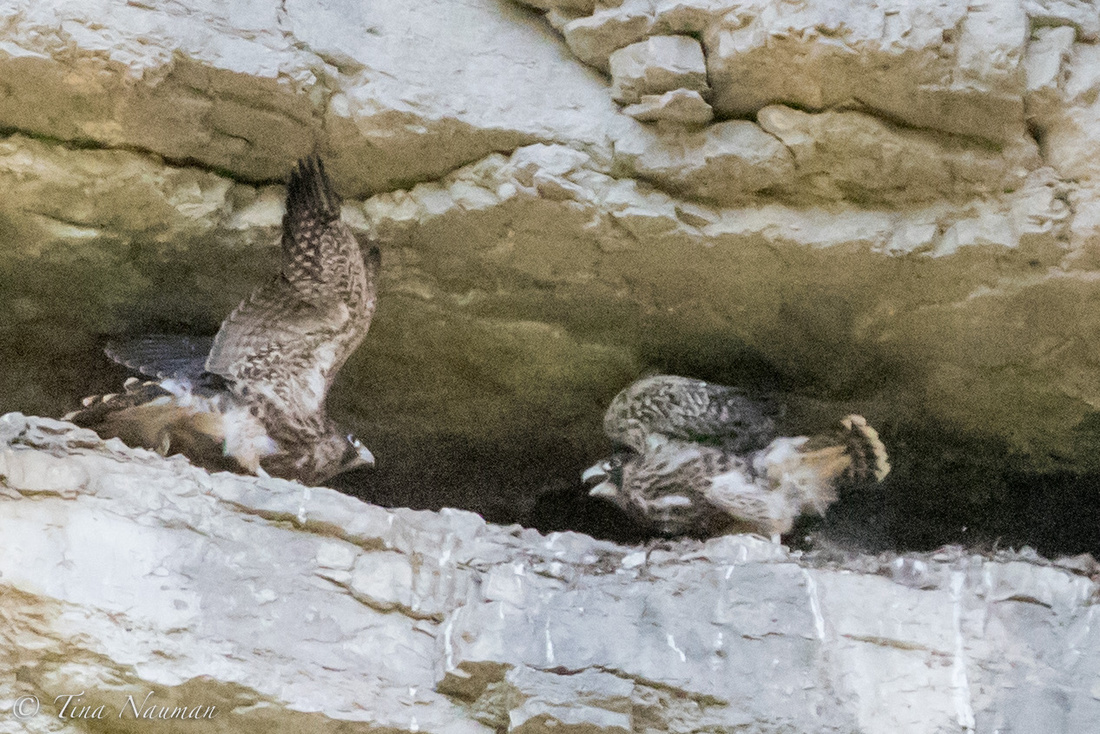

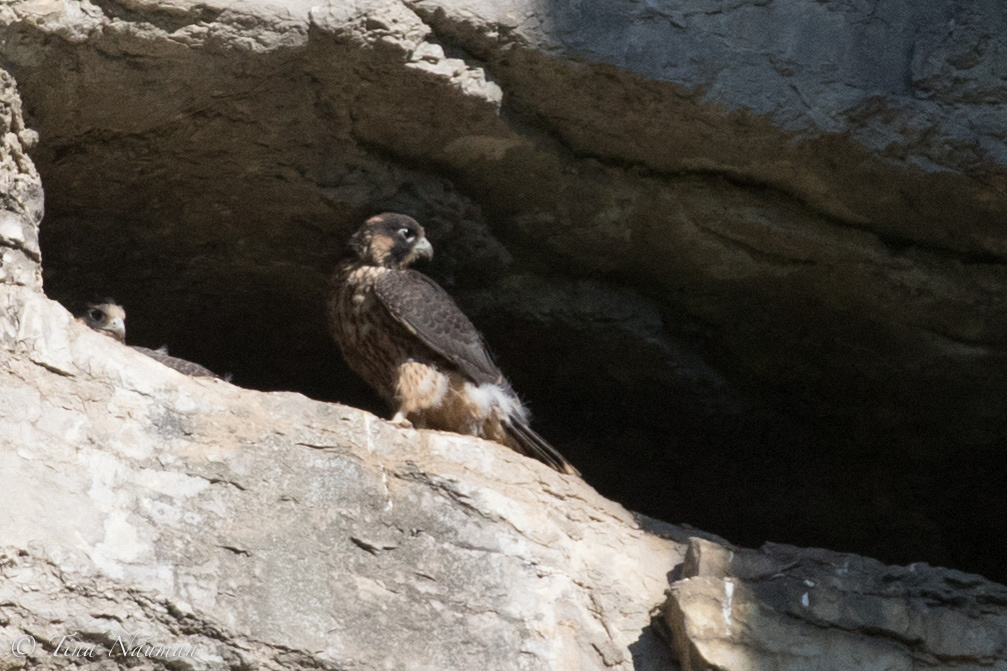

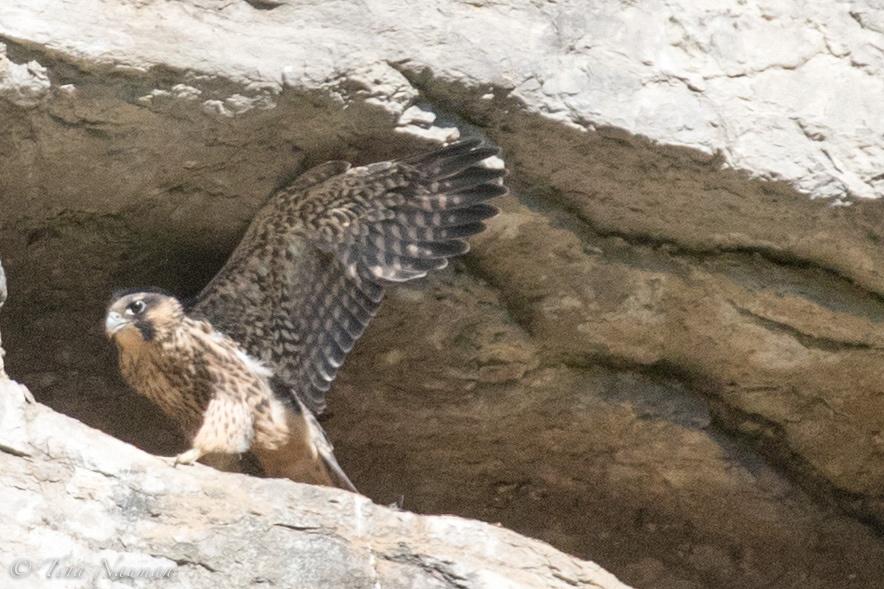

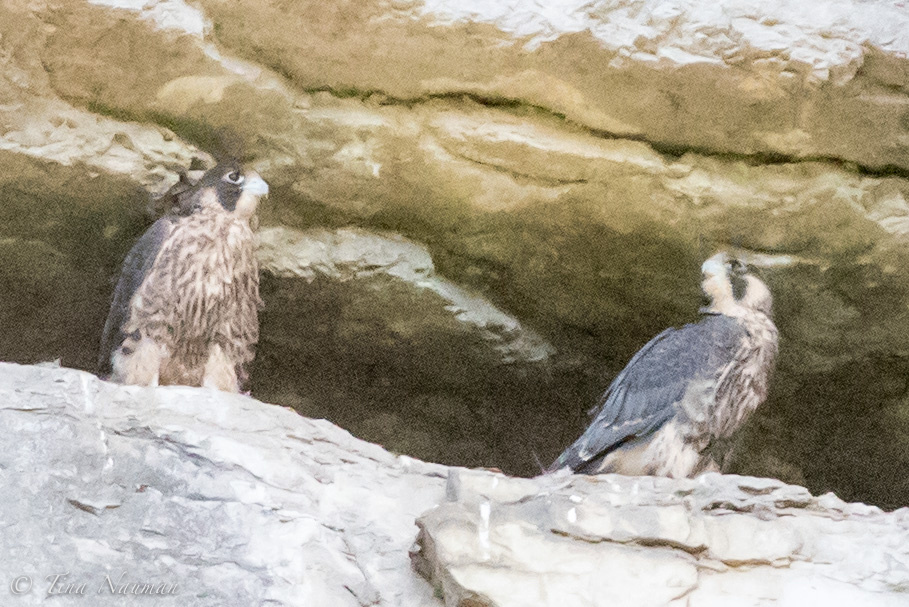

When ready to fledge the surrounding area is large and provides them a great deal of space to develop their landing, take-offs and flight skills.
Only once did I witness one failure of communication between Dee and BJ. But Dee was in charge and clearly let BJ know that she needed him to bring in more food than had been provided one foggy morning. This was a time when the eyasses were growing quickly as was their appetite so BJ may not have adjusted food amounts to account for that growth. Both parents were perched on the cliff but Dee was staring at BJ, vocalizing and clearly not happy. BJ had his back to her but when the vocalization increased in intensity and became more urgent he turned and watched her intently but did nothing. Suddenly Dee burst into flight, flew to him and physically knocked him off his perch. He got the message and flew off and returned quite quickly with a Killdeer that was given to Dee who, in turn, fed the eyasses. More food quickly followed. Message received and peace returned to the cliff nest.
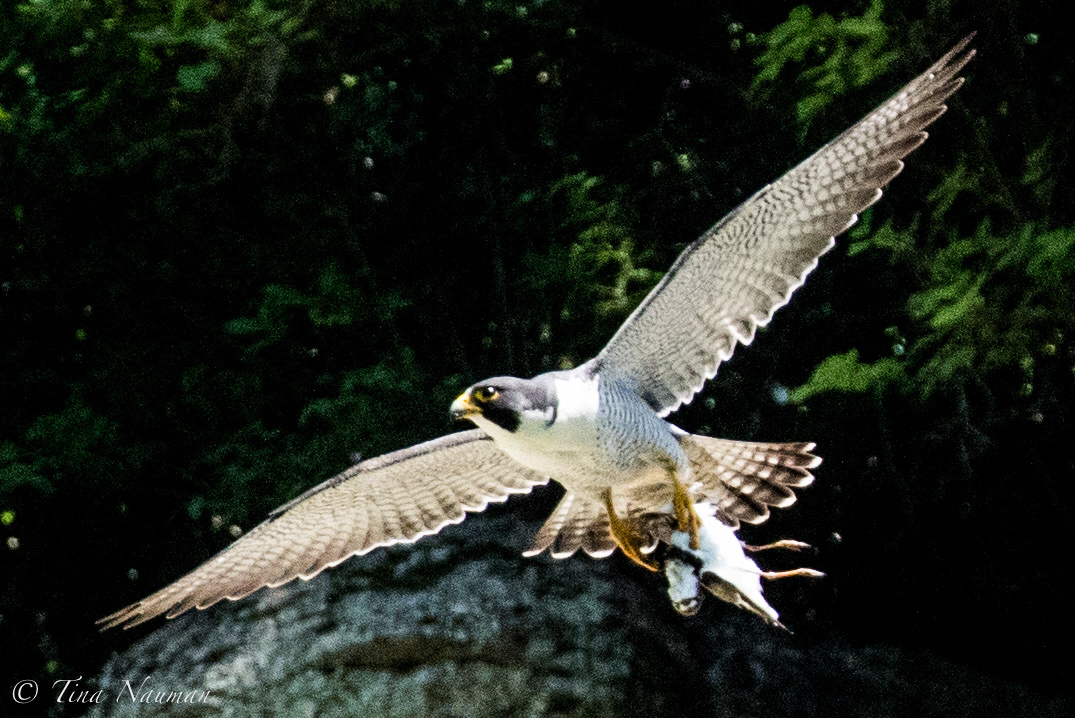

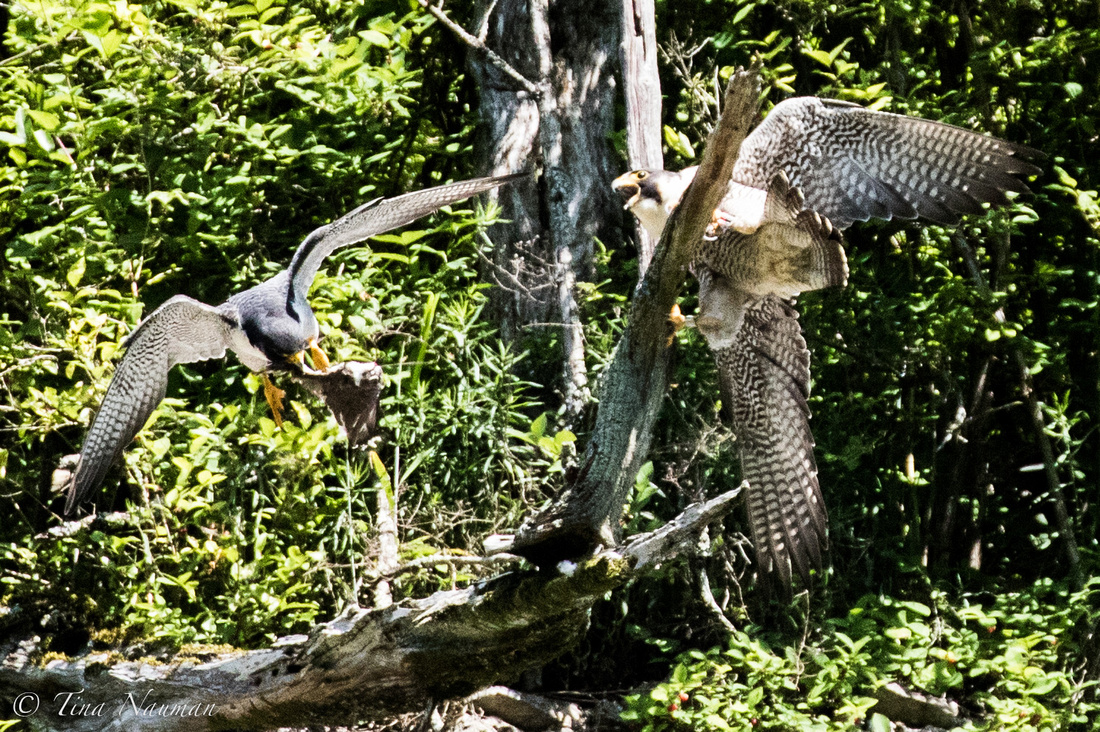

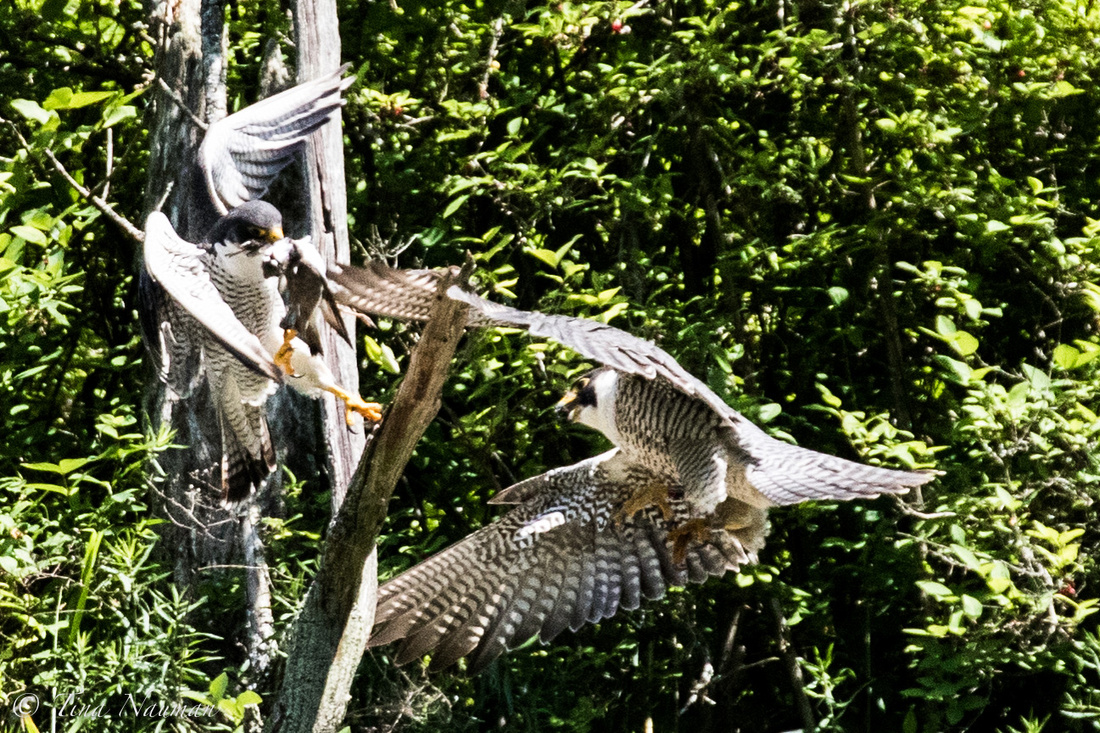

As they prepare to fledge there was an obvious change on the cliff. Dee and BJ stuck very close to the cliff. If one fell or fledged they were on watch and ready to help. Both were very aggressive toward any large birds. With Vultures plentiful they took the brunt of the action and several began to look very ragged. Both parents perched in unusual places and seemed to be analyzing the surrounding area. D6 was spending much time "wingercising", staring into space and bobbing her head as she brought this outward world into focus. Little attention was given to her sisters. Her view had become outward rather than focused on the nest site. The feel that something big was going to happen was palatable and absolutely not our imaginations. Behaviors radically changed. The two days before fledge I started getting up early as most fledges happen early in the morning with the first lift of air currents. That gives the fledgling and parents time to work out any problems that might develop during the fledge and be sure all are well fed before their first night as fledglings.
Next: D6 fledges like an angel!